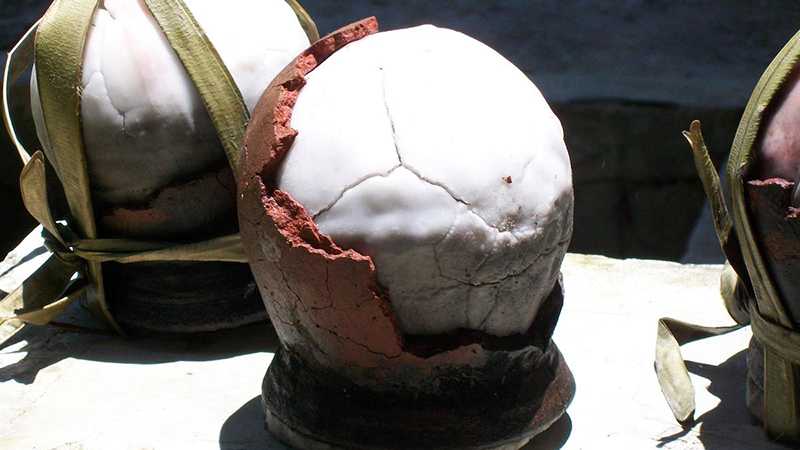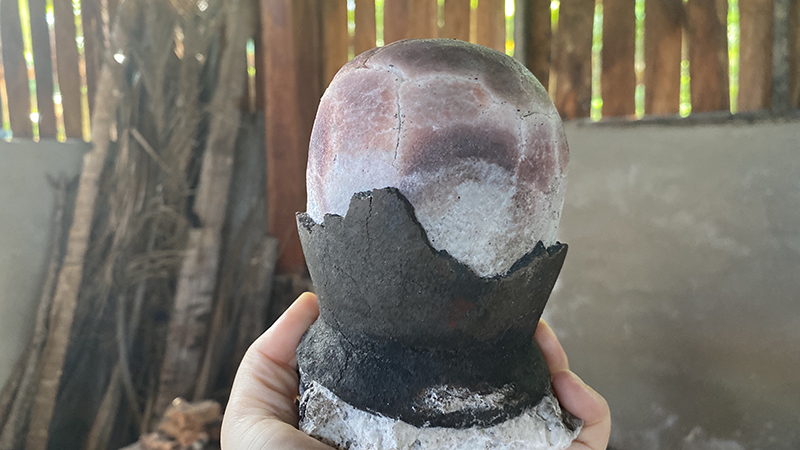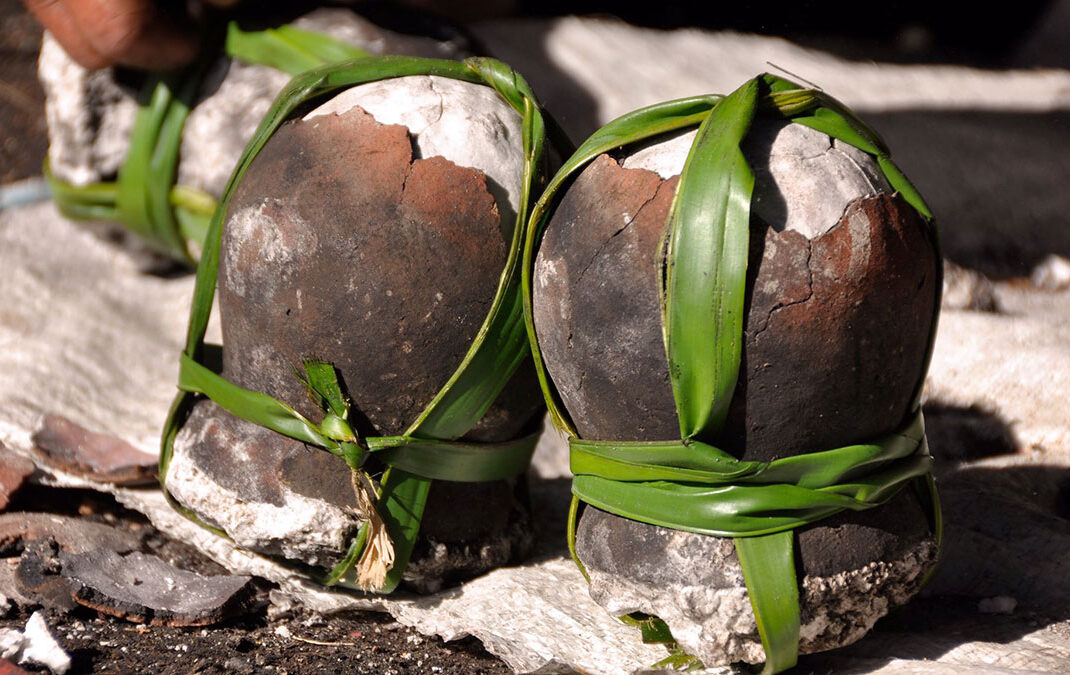In terms of cooking, we pay little attention to the ingredients we use in the kitchen, such as salt. While it may sound simple to some, salt plays a crucial role in enhancing the flavor of any dish you create. That’s why we hear renowned chefs and food writers raving about some artisanal salt that would supposedly blow your mind.
We often hear about Fleur de Sal, Himalayan salt, and bamboo salt. But unbeknown to many, the Philippines has its version of these expensive flavorings in the form of an odd, dome-shaped salt that contains centuries of flavors, history, and tradition – the Asin Tibuok.
How is Asin Tibuok made?

Photo: xroads Philippine Sea Salts
Creating a small mound of the Boholano seasoning entails quite a laborious affair. It all starts with “Pag-aabo,” the process of salt water filtration. Next, coconut husks would be soaked for months in filtered seawater to absorb their natural minerals.
The artisans would then choose the salinated husks ready for harvest. These would be chopped into small pieces, sun-dried for at least three days, and burned slowly using indigenous hardwoods. Ipil-Ipil and Duhat are the most common firewood used for this procedure.
What emerges from the ashes after days of slow-burning would be the earlier forms of Asin Tibuok. These raw and unrefined chunks would undergo another round of sifting and filtering in a machine called “sagsag.”
Once the filtration process is finished, the desired salt solution called “tasik” will be poured into clay pots repeatedly until they form the familiar sphere making up its distinct physical features.
This type of salt-making is somewhat tricky to achieve as it is understandably complicated to produce during the wet season. However, the dry season is the perfect period to make Asin Tibuok.
The ancient salt’s flavor profile and its many culinary uses
The Alburquerque-bred salt has its unique taste. Gourmands and culinary experts praise its smoky flavor, all thanks to the coconut charcoal. It also gives off a hint of sweetness that sets it apart from the common table salt sold off in grocery stores.
Asin Tibuok might overwhelm both seasoned and newbie cooks seeing this ancient salt for the first time. But with the help of a nifty Microplane grater, you can slowly scrape away its outer part until you reach down to all its powdery white glory.
So how do you use this local salt? In general, you can use it as is. Additionally, you can incorporate it as the main flavoring for stews, soups, and various meat and fish dishes.
There are even more ingenious and modern ways of combining Asin Tibuok into your cooking. Some creative recipes feature this salt as essential for artisanal chocolates and desserts. Others would create a simple yet homey pasta dish out of tomatoes, some oil, and smoke-infused salt.
Why is Asin Tibuok on the brink of extinction?

Photo: Out of Town Blog
As with many archaic food traditions from centuries past, the art of salt making in Bohol is slowly dying as no one in the present generation would take the reins from their forefathers. Apart from the grueling salt-making process, artisans are at a considerable loss because of the competition from low prices of imported salt. The infamous Act for Salt Iodization Nationwide (ASIN Law) in 1995 made it harder for local saltmakers to create a sustainable livelihood out of their trade as they are required to iodize their food-grade salt.
The mandate also made it more challenging for the continuous development of local sea salt farming resulting in the country importing salt of up to 80% – a far cry from before, considering that the archipelago country is 100% self-sufficient in salt production.
A salty renaissance emerging
Despite many setbacks and a seemingly dark age for local salts, hope is still packed to the brim. Apart from growing interest in heritage foods like Asin Tibuok, we see foreign interest in our homegrown salt. The Slow Food Ark of Taste catalog included the prized salt in the endangered heritage foods list in 2016. The Fermentary, meanwhile, sells the dome-shaped salt online for $210 and has lovingly nicknamed it “The Dinosaur Egg.”
Both local and international chefs have taken it upon themselves to revive Asin Tibuok and elevate it with a more global appeal. Local restaurants also preserve food heritage by adding this precious salt to their pantries.
Local families still operating have opened their doors for more people to learn about the primitive salt-making technique in the hopes of sharing this with a broader audience. We are also seeing local and international media covering the Boholano salt.
How can you help preserve the legacy of Asin Tibuok?

Photo: Damn Good Travels
In your little way, you can help preserve Asin Tibuok so that more generations can still savor its history. You can support small salt farmers in Bohol and the Philippines by buying directly from the supplier/manufacturer.
You can also find local artisan-friendly shops in the metro carrying local foodstuffs. If you’re feeling adventurous, you can visit Bohol and make a side food trip to Alburquerque. It’s the perfect opportunity to meet the locals and have the asinderos impart their knowledge directly to you while savoring the pure taste of the native salt fresh from the farm.



